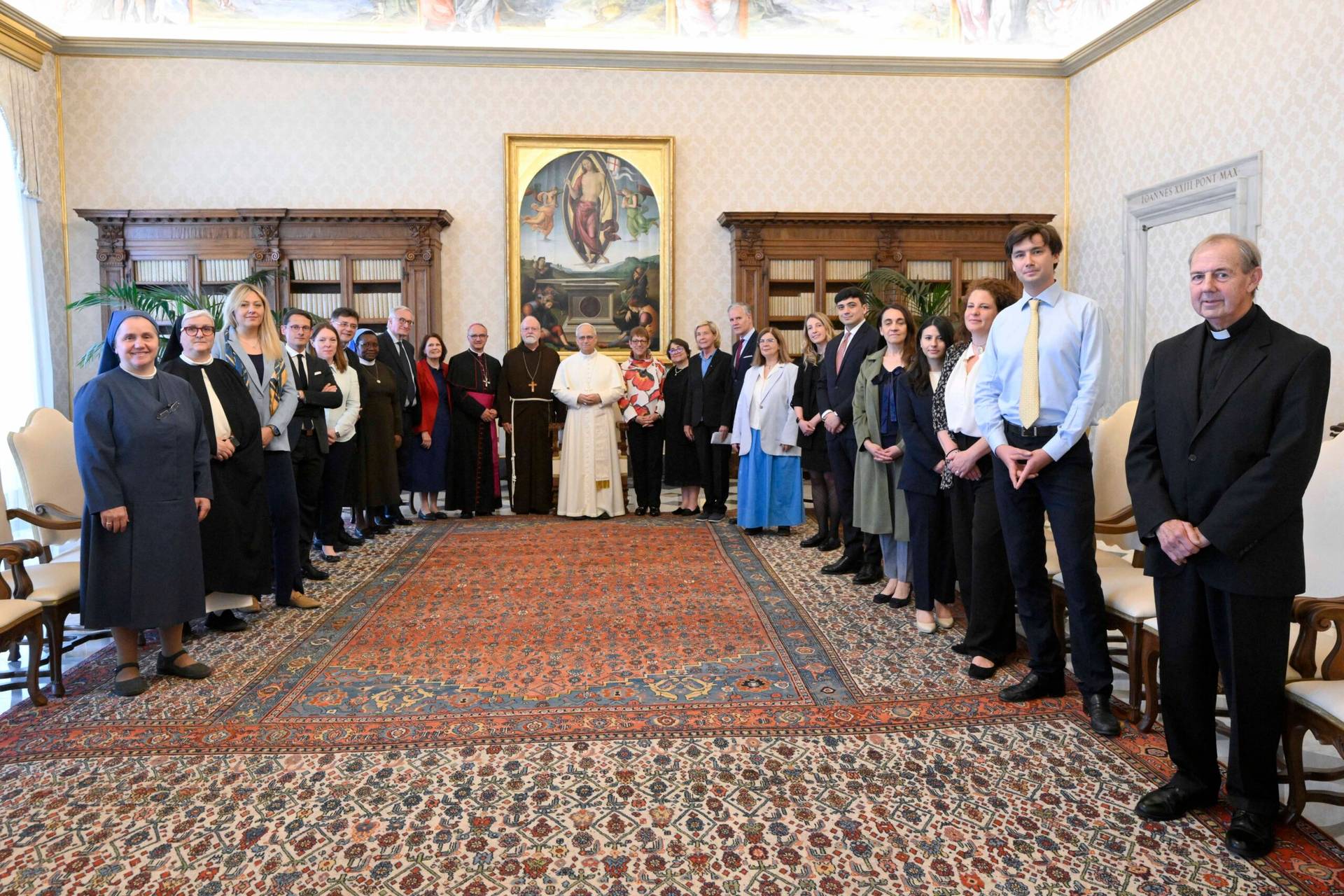ROME – St. Francis of Assisi supposedly said, “Preach always, and, when necessary, use words.” In all honesty, there’s no evidence St. Francis ever said anything like that – but even so, it’s a piece of advice popes long have taken to heart.
Over the centuries, popes have always found plenty of ways to speak without using words, especially when words might be inconvenient or hard to take back. Popes speak by gestures, by whom they name to key jobs, by where they put their money and where they chose to travel.
Even a pope’s appointment calendar can be a way of getting a message across, which was certainly the case for St. Francis’s namesake, Pope Francis, yesterday.
Every day the Vatican Press Office sends journalists a list of who’s on the pope’s schedule that day, and rarely does the list make headlines. Mostly it’s people we already knew were coming, or Vatican officials with an obvious reason for seeing the boss.
Yesterday, however, was the list that launched a thousand tweets, because it contained the unexpected name of Cardinal Blase Cupich of Chicago.
In the abstract, there’s nothing terribly unusual about a pope meeting a cardinal, and Cupich is a member of both the Vatican’s Congregation for Catholic Education and its all-important Congregation for Bishops, so in theory there could have been housekeeping involving one or both of those departments that required some face time with Francis.
However, this meeting came just ten days after Cupich publicly unbraided Archbishop Jose Gomez of Los Angeles, president of the US bishops’ conference, for a statement on the inauguration of President Joe Biden warning that the new administration “would advance moral evils and threaten human life and dignity.” Cupich called that statement “ill-considered” and insisted it did not go through the usual collegial vetting process, implying it was overly confrontation vis-à-vis the new administration.
In that context, it’s been difficult for most observers not to interpret the meeting with the pope as a show of support by Francis for Cupich in the dispute with Gomez, and thus, more broadly, for a more positive approach to the new Biden administration.
That interpretation is all the more seductive given that neither the Vatican nor Cupich have offered any explanation of the nature of the meeting, at least so far – leaving the clear impression that they’re content with the gloss pretty much everyone has given it, i.e., as a thumbs-up for the Cupich line.
It won’t do simply to say that Francis wanted to be briefed on the situation in the States. Were that all, there are plenty of other people who could have brought the pontiff up to speed who weren’t themselves a party to the dispute beginning with his own envoy in America, French Archbishop Christophe Pierre.
Nor will it quite fly to say that the pope wanted to promote reconciliation, or to avoid public conflict among bishops. Were that the agenda, the logical move would have been to speak to both Cupich and Gomez together. (Back in 2010, after Cardinal Christoph Schönborn of Vienna publicly accused Italian Cardinal Angelo Sodano, the former Secretary of State under St. John Paul II, of blocking a sex abuse investigation, the two prelates were summoned to Rome for a kiss-and-make-up session under Pope Benedict XVI.)
By meeting just one of the protagonists to the conflict without the other, the inevitable take-away is that the pontiff wanted to send a signal about where his sympathies lie.
That’s the case, by the way, regardless of who actually initiated the meeting. Even if it was Cupich who requested a spot on the calendar, the pope was under no obligation to grant it. When retired Cardinal Joseph Zen of Hong Kong recently came to Rome looking for papal support for his hawkish line on China, for example, he went home without having seen the boss.
The genius of this mode of speech, however, lies precisely in its flexibility – right now its meaning may seem crystal clear, but some ambiguity could always be injected later should it prove necessary.
To take an historical example, under John Paul II the pontiff was in the habit of giving visiting Anglican bishops a pectoral cross, the same gift he would bestow on visiting Catholic bishops. In ecumenical circles, that gesture was taken as an implicit repeal of an 1896 decree by Pope Leo XIII that Anglican ordinations are invalid.
Should anyone ever have made a federal case out of it, however, the Vatican always could have issued a statement to the effect that it was simply a fraternal gesture by the pope devoid of any doctrinal significance.
Similarly here, should the apparent papal involvement in an internal dispute among the American bishops become problematic, a statement could be issued saying the pontiff simply wanted to consult Cupich on Vatican business and that other matters are for the Americans themselves to resolve.
All that may seem a bit Machiavellian, or cynical. Yet in reality, keeping some capacity for ambiguity in reserve is a necessary tool for the leader of a wildly complicated global institution of more than a billion people, where no one can predict with certainty all the consequences of a particular statement. That’s why words sometimes aren’t the best vehicle for papal messages, especially on sensitive and rapidly evolving issues, since it’s much harder to walk back words than gestures.
In other words, speaking without using words is sometimes the smartest thing for any pope to do, and the Cupich meeting suggests it’s a lesson Francis too has mastered.
Follow John Allen on Twitter at @JohnLAllenJr.


















